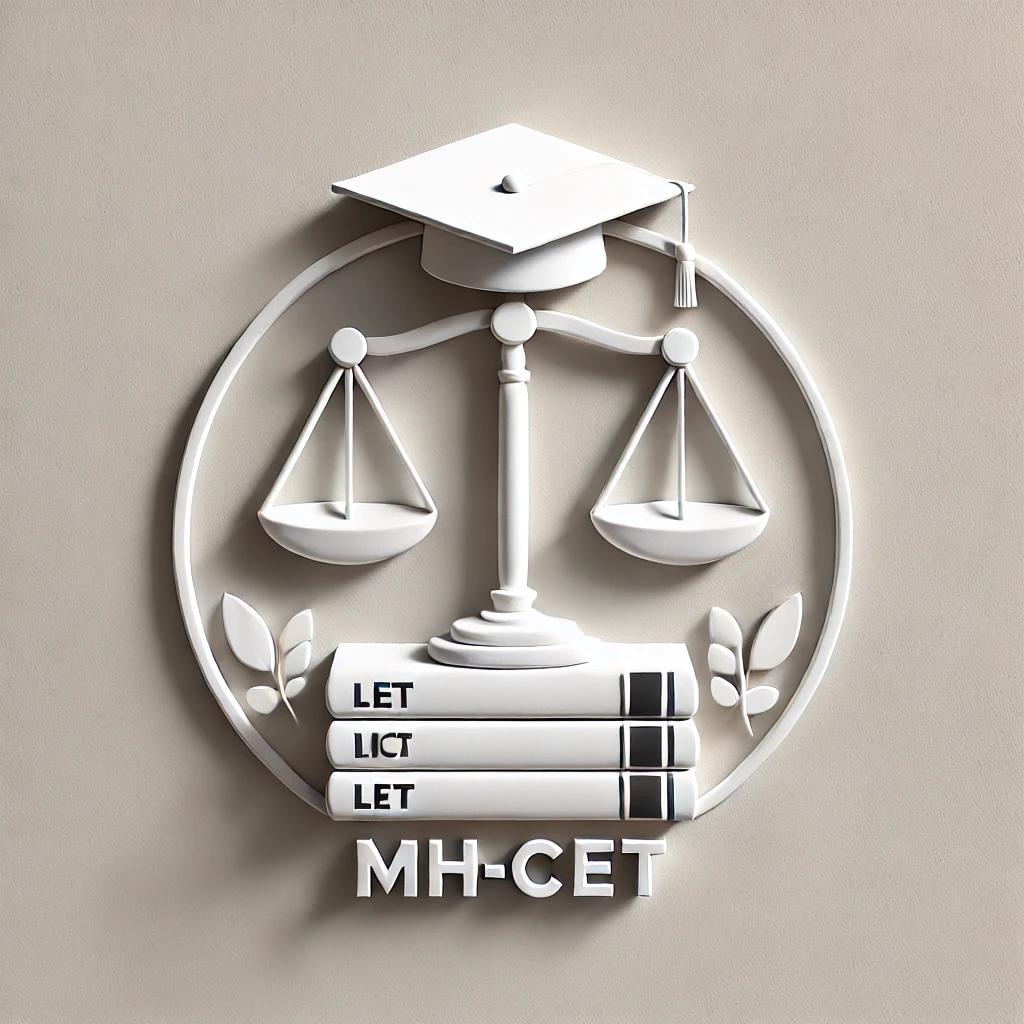By I Oct 14, 2024
The Common Law Admission Test (CLAT) is a vital exam for those looking to enter law schools in India. For engineers considering a shift to law, understanding CLAT and its requirements is crucial. This article explores the opportunities, challenges, and resources available for engineers wanting to take this significant step in their careers.
Key Takeaways
- Engineers are eligible to apply for CLAT, opening doors to a new career path.
- The exam tests various skills, including logical reasoning and legal knowledge, which can be beneficial for engineers.
- Time management is essential for balancing engineering studies and CLAT preparation.
- Success stories of engineers in law highlight the potential for a rewarding career transition.
- Resources like "CLAT Possible" can provide valuable support for aspiring engineer-lawyers.
Understanding CLAT: An Overview for Engineers
What is CLAT?
The Common Law Admission Test, or CLAT, is a national-level entrance exam for law schools in India. It serves as a gateway for students aspiring to pursue a career in law. The exam tests various skills, including logical reasoning, comprehension, and legal aptitude. Unlike other competitive exams, CLAT emphasizes a broad curriculum that prepares candidates for diverse legal and non-legal careers.
Importance of CLAT for Law Aspirants
For engineers looking to transition into law, CLAT is crucial. It not only opens doors to prestigious law schools but also enhances career prospects in various fields. Excelling in this exam can provide a competitive edge and shape a successful career in law.
Eligibility Criteria for CLAT
To apply for CLAT, candidates must meet specific eligibility criteria:
- Educational Qualifications: Candidates should have completed their higher secondary education (10+2) with a minimum percentage.
- Age Limit: There is no upper age limit for the exam, making it accessible for non-traditional students.
- Special Considerations for Engineers: Engineers are often seen as strong candidates due to their logical reasoning skills and attention to detail, which are essential for success in CLAT.
Engineers possess a unique skill set that can be advantageous in law, making them valuable candidates for CLAT.
In summary, CLAT is not just an exam; it is a stepping stone for engineers to explore new career opportunities in law. With resources like CLAT Possible, aspiring candidates can find support and guidance tailored to their needs.
Why Engineers Should Consider Applying for CLAT
Career Transition Opportunities
Many engineers find themselves seeking new paths in their careers. Pursuing law can open doors to various fields, such as corporate law and intellectual property rights. Engineers possess strong analytical skills, making them well-suited for legal studies. Here are some career options:
- Corporate Law: Work with businesses on legal matters.
- Intellectual Property Law: Protect inventions and creative works.
- Public Sector Opportunities: Join government organizations that require legal expertise.
Skill Set Advantages
Engineers bring unique skills to the legal field. Their background in problem-solving and logical reasoning can be beneficial in law. Some advantages include:
- Analytical Thinking: Engineers excel in breaking down complex problems.
- Attention to Detail: This skill is crucial in legal documentation and analysis.
- Technical Knowledge: Understanding technology can be a plus in tech-related legal cases.
Success Stories of Engineers in Law
Many engineers have successfully transitioned to law, proving that it’s a viable path. For instance, several alumni from CLAT Possible have shared their journeys, highlighting how their engineering background helped them excel in law school. They emphasize the importance of preparation and the right resources, such as coaching centers and study groups, to navigate this transition effectively.
Engineers can leverage their technical skills and analytical mindset to thrive in the legal profession. With the right guidance, they can make a successful career switch.
Eligibility Criteria for Engineers Applying for CLAT
Educational Qualifications Required
To apply for CLAT, engineers must meet specific educational requirements. Here’s a quick overview:
- Undergraduate Level (CLAT UG): Candidates should have completed their class 12 from a recognized board with at least 45% marks (40% for SC/ST candidates).
- Postgraduate Level (CLAT PG): Candidates must hold a 5-year integrated LLB or a 3-year LLB degree with a minimum of 50% marks (45% for SC/ST candidates).
Age Limit and Other Criteria
- There is no age limit for appearing in the CLAT exam, making it accessible for engineers at any stage of their career.
- Candidates currently in their final year of their qualifying degree are also eligible to apply.
Special Considerations for Engineers
Engineers applying for CLAT may have unique advantages:
- Their analytical skills can help in logical reasoning sections.
- Familiarity with technical subjects can aid in understanding legal concepts related to technology and intellectual property.
Engineers looking to transition into law should consider utilizing resources like CLAT Possible, which offers tailored support for aspirants.
In summary, engineers can apply for CLAT if they meet the educational qualifications and age criteria. With the right preparation and resources, they can successfully navigate this transition into the legal field.
Preparing for CLAT: Tips for Engineers
Study Materials and Resources
To prepare effectively for the CLAT, engineers should focus on the right study materials. Here are some recommended resources:
- Books: Look for guides specifically designed for CLAT preparation, such as The Pearson Guide to the CLAT and Word Power Made Easy.
- Online Courses: Platforms like CLAT Possible offer structured courses tailored for engineers.
- Mock Tests: Regularly taking mock tests is crucial. Aim to complete at least 6-8 mock tests before the exam to gauge your readiness.
Time Management Strategies
Balancing engineering studies and CLAT preparation can be challenging. Here are some strategies:
- Create a Study Schedule: Allocate specific times for CLAT preparation each week.
- Prioritize Topics: Focus on areas where you feel less confident, such as Legal Reasoning or Current Affairs.
- Use Breaks Wisely: Utilize semester breaks for intensive study sessions.
Mock Tests and Practice Papers
Mock tests are essential for success in CLAT. They help you:
- Familiarize yourself with the exam format.
- Identify strengths and weaknesses in your preparation.
- Improve time management skills during the exam.
Remember, consistent practice is key to unlocking success in CLAT. By integrating resources like CLAT Possible into your study plan, you can enhance your preparation and increase your chances of success.
Exam Pattern and Syllabus for CLAT
Sections of the CLAT Exam
The CLAT exam consists of 120 multiple-choice questions divided into five sections. Here’s a breakdown of the sections:
| Section | Number of Questions | Weightage (%) |
|---|---|---|
| Current Affairs, including GK | 35-39 | 25% |
| English Language | 28-32 | 20% |
| Logical Reasoning | 28-32 | 20% |
| Quantitative Techniques | 13-17 | 10% |
| Legal Reasoning | 35-39 | 25% |
| Total | 120 | 100% |
Weightage of Different Sections
Understanding the weightage of each section is crucial for effective preparation. The Legal Reasoning and Current Affairs sections carry the most weight, making them essential areas to focus on. Here’s a quick list of tips:
- Prioritize sections with higher weightage.
- Allocate more study time to Legal Reasoning and Current Affairs.
- Don’t neglect the Quantitative Techniques section, even though it has less weight.
Changes in the Exam Pattern Over the Years
The CLAT exam pattern has seen some changes over the years, but the core structure remains consistent. Staying updated with the latest changes is vital for success. For instance, the CLAT 2025 notification outlines important details about the exam, including the marking scheme:
- +1 mark for each correct answer.
- -0.25 marks for each incorrect answer.
In conclusion, understanding the exam pattern and syllabus is key for aspiring law students, especially for engineers looking to transition into law. Utilizing resources like CLAT Possible can provide additional support and guidance in your preparation journey.
Balancing Engineering Studies and CLAT Preparation
Time Management Techniques
Balancing engineering studies with CLAT preparation can be challenging, but with effective time management, it is achievable. Here are some techniques:
- Create a Study Schedule: Allocate specific times for both engineering subjects and CLAT preparation.
- Set Priorities: Focus on subjects that need more attention and adjust your schedule accordingly.
- Use Breaks Wisely: Utilize short breaks between classes for quick revision or practice questions.
Prioritizing Subjects
When juggling both fields, it’s essential to prioritize:
- Engineering Assignments: Complete these first to avoid last-minute stress.
- CLAT Topics: Focus on high-weightage areas in the CLAT syllabus.
- Revision: Regularly review both engineering and CLAT materials to reinforce learning.
Utilizing Semester Breaks Effectively
Semester breaks are a great opportunity to catch up on studies. Here’s how to make the most of them:
- Intensive Study Sessions: Dedicate longer hours to CLAT preparation during breaks.
- Mock Tests: Take full-length mock tests to simulate exam conditions.
- Join Coaching: Consider enrolling in a coaching program like CLAT Possible for structured guidance.
Balancing two demanding fields requires discipline and a clear plan. Stay focused on your goals, and remember that both engineering and law can lead to rewarding careers.
Career Opportunities After Clearing CLAT for Engineers
Corporate Law
Engineers who clear CLAT can find exciting roles in corporate law. They can work with companies to handle legal matters, ensuring compliance with laws and regulations. This field often offers high salaries and the chance to work on significant projects.
Intellectual Property Law
Another promising area is intellectual property law. Engineers can use their technical knowledge to help protect inventions, trademarks, and copyrights. This is especially relevant in tech industries where innovation is key.
Opportunities in Public Sector Undertakings
Engineers can also explore roles in public sector undertakings (PSUs). Many PSUs require legal expertise for their operations, and having a law degree can be a significant advantage.
Summary of Opportunities
Here’s a quick overview of the career paths available:
| Career Path | Description |
|---|---|
| Corporate Law | Work with companies on legal compliance and contracts. |
| Intellectual Property Law | Protect inventions and trademarks. |
| Public Sector Undertakings | Legal roles in government-owned companies. |
Engineers have a unique advantage in law due to their analytical skills and problem-solving abilities. With the right preparation, they can excel in various legal fields, making a significant impact in their careers.
In conclusion, clearing CLAT opens up diverse career opportunities for engineers. Programs like CLAT Possible can provide valuable resources and support to help engineers navigate this transition successfully.
Challenges Faced by Engineers in CLAT Preparation
Common Difficulties
Preparing for the CLAT exam can be tough for engineers. They often face unique challenges that can make the process overwhelming. Here are some common difficulties:
- Understanding the Exam Pattern: Engineers may find it hard to grasp the structure of the CLAT exam, which is different from engineering exams.
- Time Management: Balancing engineering studies and CLAT preparation can be tricky. Many students struggle to find enough time for both.
- Subject-Specific Challenges: Some sections, like Legal Reasoning and Current Affairs, may be unfamiliar to engineering students.
Overcoming Subject-Specific Challenges
To tackle these challenges, engineers can adopt several strategies:
- Create a Study Plan: A well-structured study plan can help manage time effectively.
- Use Quality Study Materials: Resources like CLAT Possible can provide tailored guidance and materials for engineers.
- Join Study Groups: Collaborating with peers can enhance understanding and retention of complex topics.
Seeking Guidance and Mentorship
Finding a mentor or joining coaching centers can significantly ease the preparation process. Mentors can provide valuable insights and help engineers navigate the challenges of CLAT preparation. Additionally, platforms like CLAT Possible offer specialized programs designed for engineers, making the journey smoother.
Engineers have the potential to excel in law, but they must be prepared to face and overcome these challenges. With the right strategies and support, success in CLAT is achievable!
Success Stories: Engineers Who Excelled in CLAT
Inspiring Journeys
Many engineers have successfully transitioned to law, showcasing that a background in engineering can be a strong foundation for a legal career. For instance, Sritama Goswami, an engineering graduate, shared how she utilized her analytical skills to excel in the CLAT exam. Her journey emphasizes that determination and the right resources can lead to success.
Lessons Learned
From their experiences, engineers have learned valuable lessons:
- Adaptability: Adjusting study techniques to fit the law curriculum.
- Time Management: Balancing engineering studies with CLAT preparation.
- Continuous Learning: Staying updated with current affairs and legal principles.
Advice for Aspiring Engineer-Lawyers
Engineers looking to pursue law should consider the following:
- Utilize Resources: Engage with platforms like CLAT Possible for guidance and support.
- Practice Regularly: Mock tests are crucial for understanding the exam pattern.
- Seek Mentorship: Connect with successful engineer-lawyers for insights and advice.
The journey from engineering to law is not just about changing fields; it's about leveraging your unique skills to excel in a new domain. Many have done it, and so can you!
Resources and Support Systems for Engineers
Coaching Centers and Online Courses
Finding the right resources is crucial for engineers preparing for CLAT. Here are some options:
- Top Coaching Centers: Many cities have specialized coaching centers that focus on CLAT preparation. These centers often provide structured courses tailored for engineers.
- Online Courses: Platforms like CLAT Possible offer comprehensive online courses that include video lectures, study materials, and interactive quizzes.
- Study Materials: Look for exclusive study materials provided by top online coaching platforms, which can enhance your preparation.
Study Groups and Peer Support
Joining a study group can be beneficial. Here’s why:
- Shared Knowledge: Discussing topics with peers can help clarify doubts and reinforce learning.
- Motivation: Being part of a group can keep you motivated and accountable.
- Resource Sharing: Members can share useful resources and tips for effective study.
Utilizing Alumni Networks
Connecting with alumni who have successfully transitioned from engineering to law can provide valuable insights. They can offer:
- Guidance: Advice on how to balance engineering studies with CLAT preparation.
- Mentorship: One-on-one mentorship can help you navigate challenges.
- Networking Opportunities: Alumni can introduce you to professionals in the legal field, opening doors for internships and job opportunities.
In summary, leveraging resources like coaching centers, online courses, and alumni networks can significantly enhance your CLAT preparation journey.
The Role of CLAT Possible in Assisting Engineers
Overview of CLAT Possible
CLAT Possible is a dedicated platform that helps students prepare for the Common Law Admission Test (CLAT). It offers various resources tailored for aspiring law students, including engineers. This initiative is crucial for those looking to transition into law.
Success Rates and Testimonials
Many students have benefited from CLAT Possible. Here are some key points:
- High success rates: Many students who used CLAT Possible have successfully gained admission to top law schools.
- Positive feedback: Testimonials highlight the effectiveness of the program in simplifying complex topics.
- Diverse resources: The platform provides study materials, mock tests, and expert guidance.
Special Programs for Engineers
CLAT Possible recognizes the unique challenges engineers face when preparing for CLAT. They offer:
- Tailored study plans: Programs designed specifically for engineers to leverage their analytical skills.
- Workshops and seminars: Events focusing on the intersection of engineering and law, helping students understand how their background can be an asset.
- Mentorship opportunities: Access to mentors who have successfully transitioned from engineering to law, providing valuable insights.
CLAT Possible is not just about passing an exam; it’s about unlocking future success in a new career path.
By utilizing the resources and support from CLAT Possible, engineers can confidently navigate their journey into the legal field, making the most of their unique skill sets and experiences.
CLAT Possible plays a vital role in helping engineers transition into law careers. By offering tailored courses and expert guidance, we make it easier for aspiring legal professionals to prepare for their exams. If you're an engineer looking to explore a new path, visit our website to learn more about how we can assist you!
Final Thoughts on CLAT for Engineers
In conclusion, engineers can definitely apply for the CLAT exam. This opens up new paths for those who want to switch careers and explore the field of law. With no age limit and a clear eligibility process, the CLAT offers a chance for anyone, including engineers, to pursue a law degree. Programs like "CLAT Possible" can help candidates prepare effectively. As the legal field continues to grow, having a diverse background can be a big advantage. So, if you're an engineer thinking about law, don't hesitate to take the leap!
Frequently Asked Questions
What is CLAT?
CLAT stands for Common Law Admission Test. It is a test for students who want to get into law schools in India.
Can engineers take the CLAT exam?
Yes, engineers can apply for CLAT. They need to meet the eligibility criteria, which includes having completed their 12th grade.
What are the main subjects in the CLAT exam?
The CLAT exam includes subjects like English, General Knowledge, Legal Reasoning, Logical Reasoning, and Mathematics.
Is there an age limit for taking CLAT?
No, there is no age limit to take the CLAT exam.
What is the minimum percentage required to apply for CLAT?
Students need at least 45% marks in their 12th grade to apply for the undergraduate course.
How long is the CLAT exam?
The CLAT exam lasts for 2 hours.
What resources can help me prepare for CLAT?
You can use study guides, online courses, and join study groups to prepare for CLAT.
What is CLAT Possible?
CLAT Possible is a program that helps students prepare for the CLAT exam with special resources and coaching.



